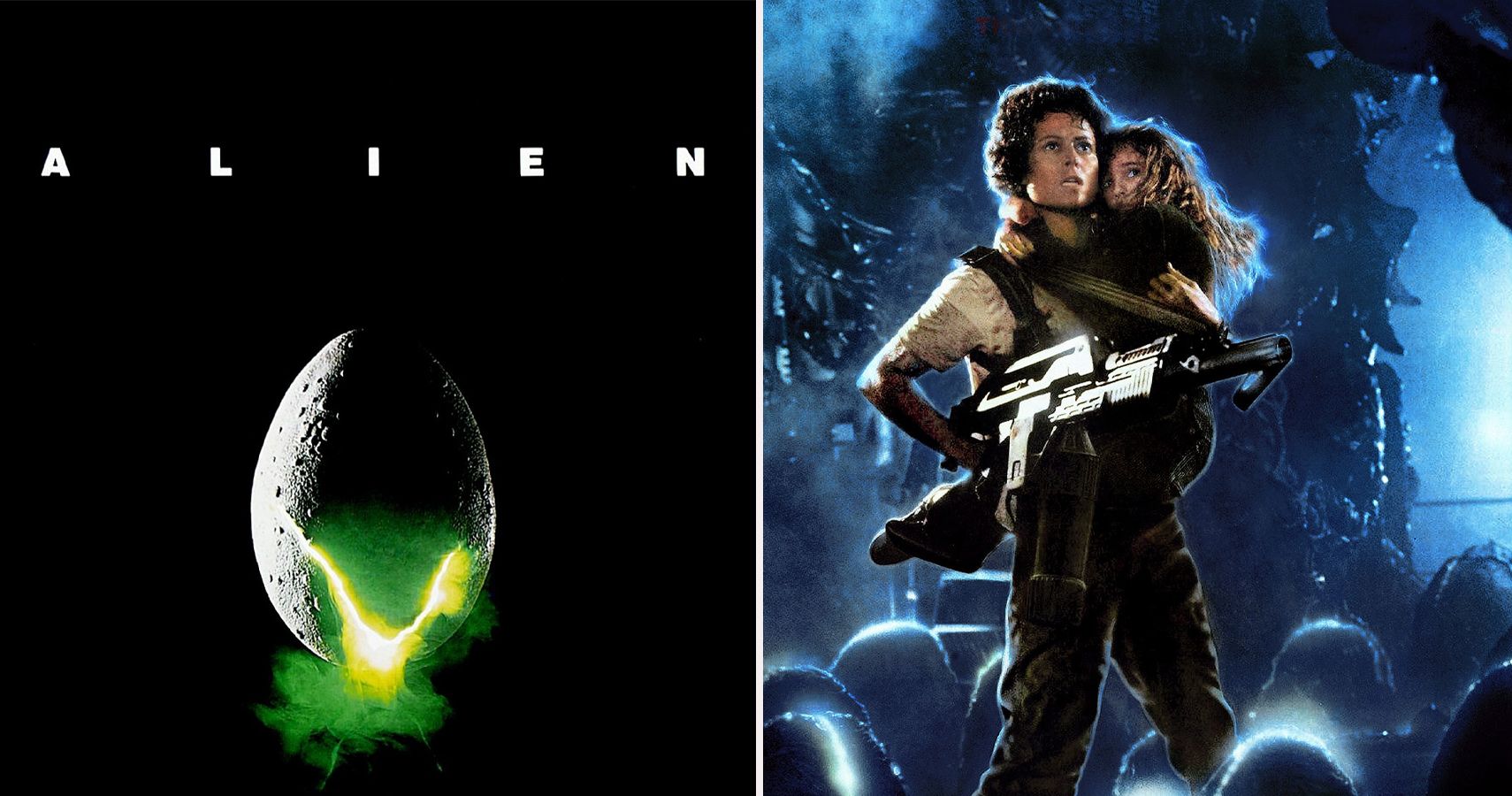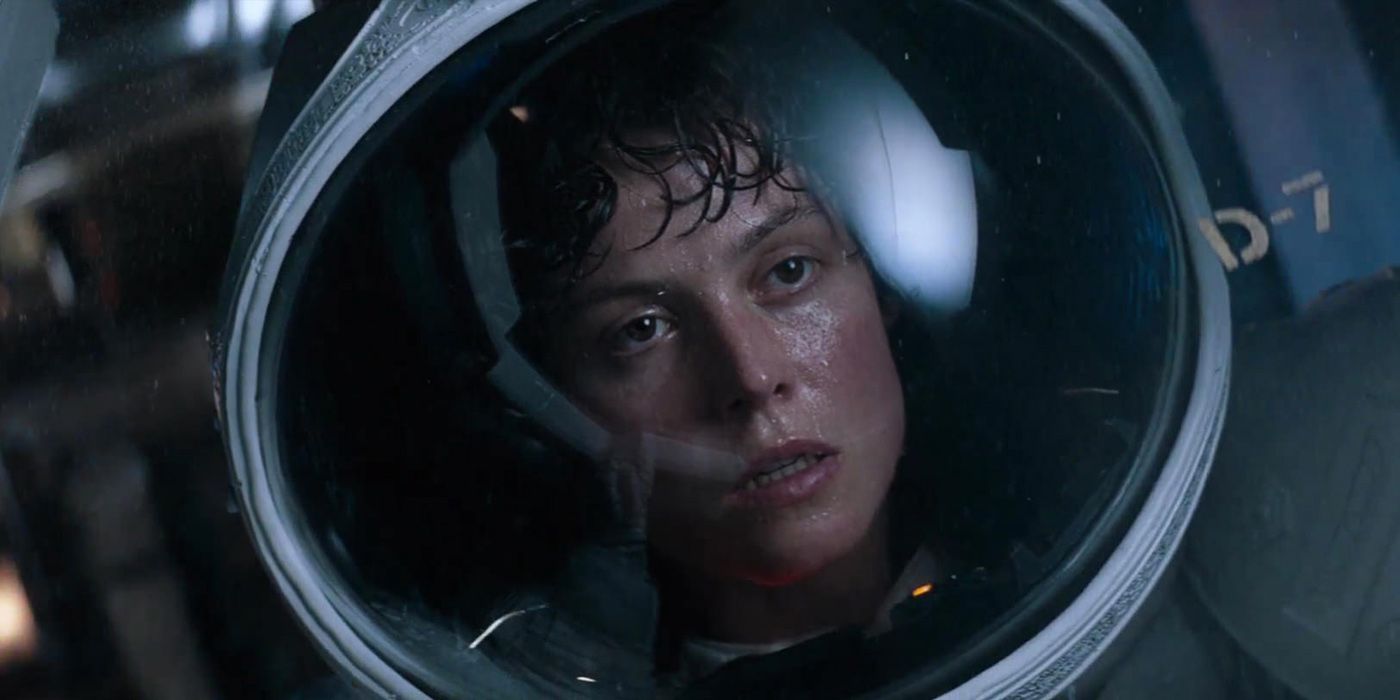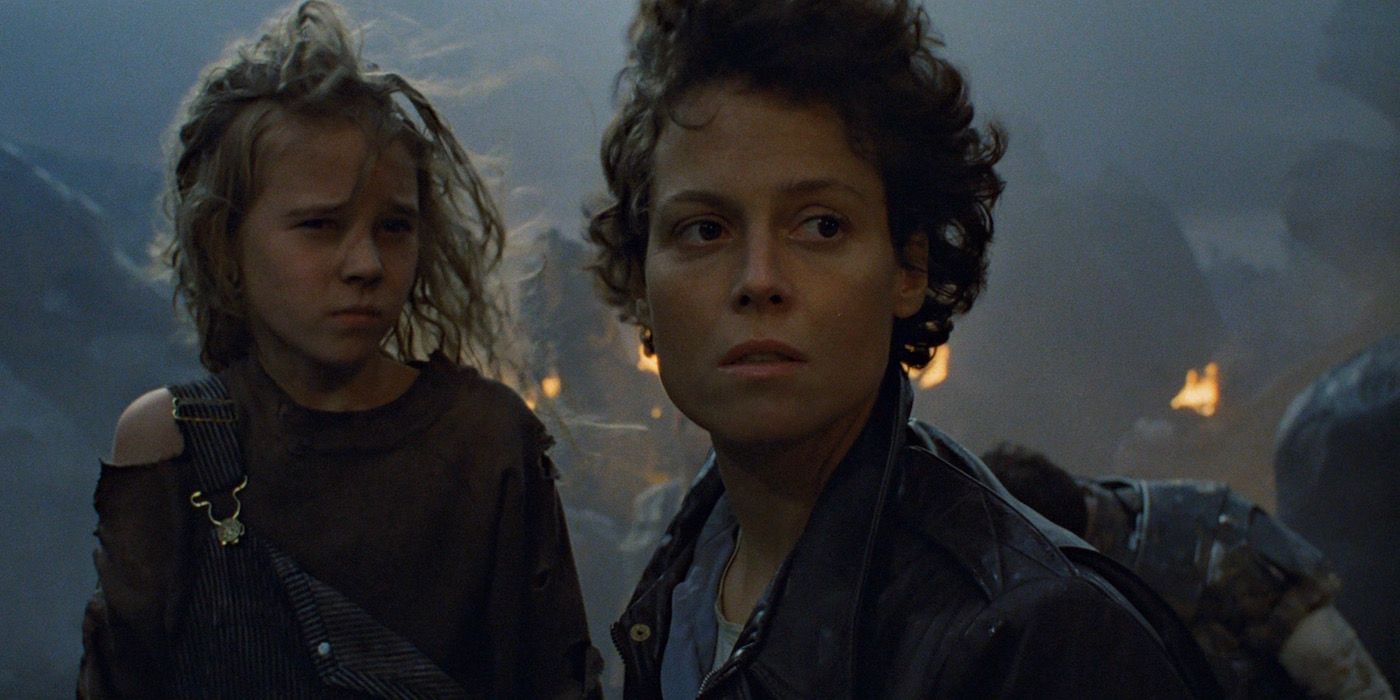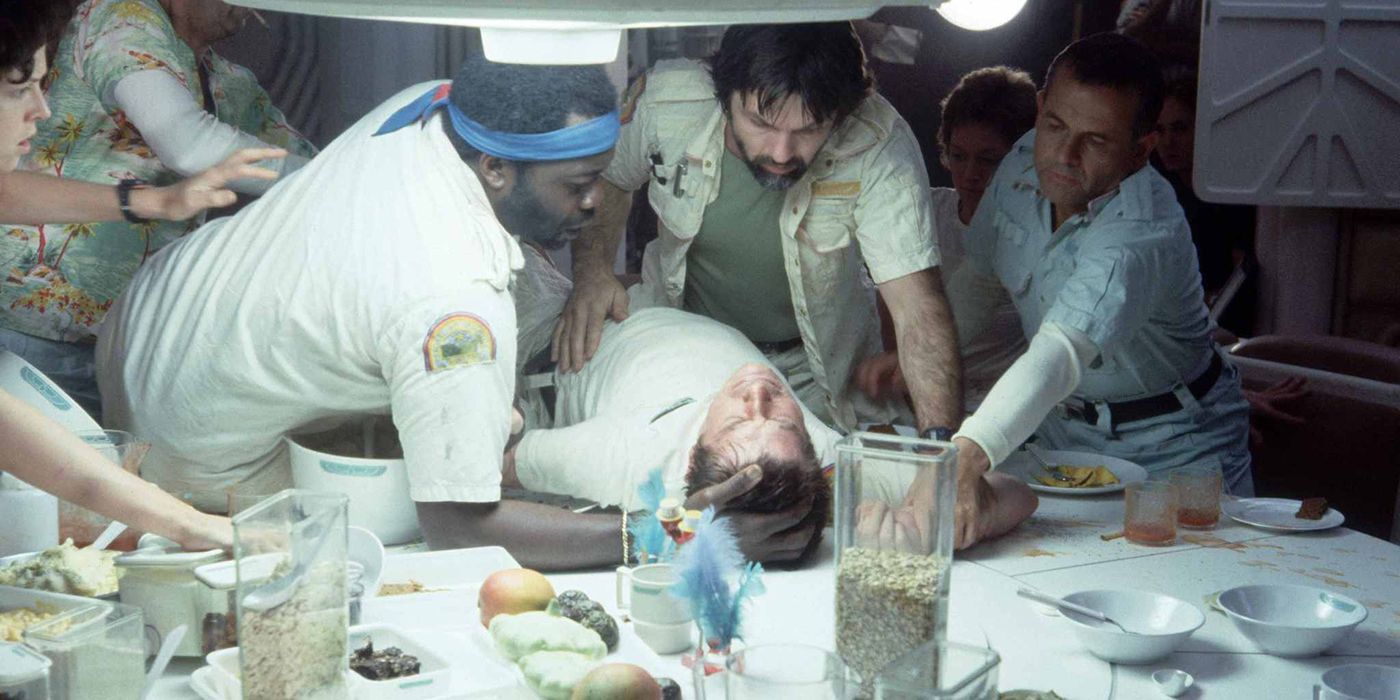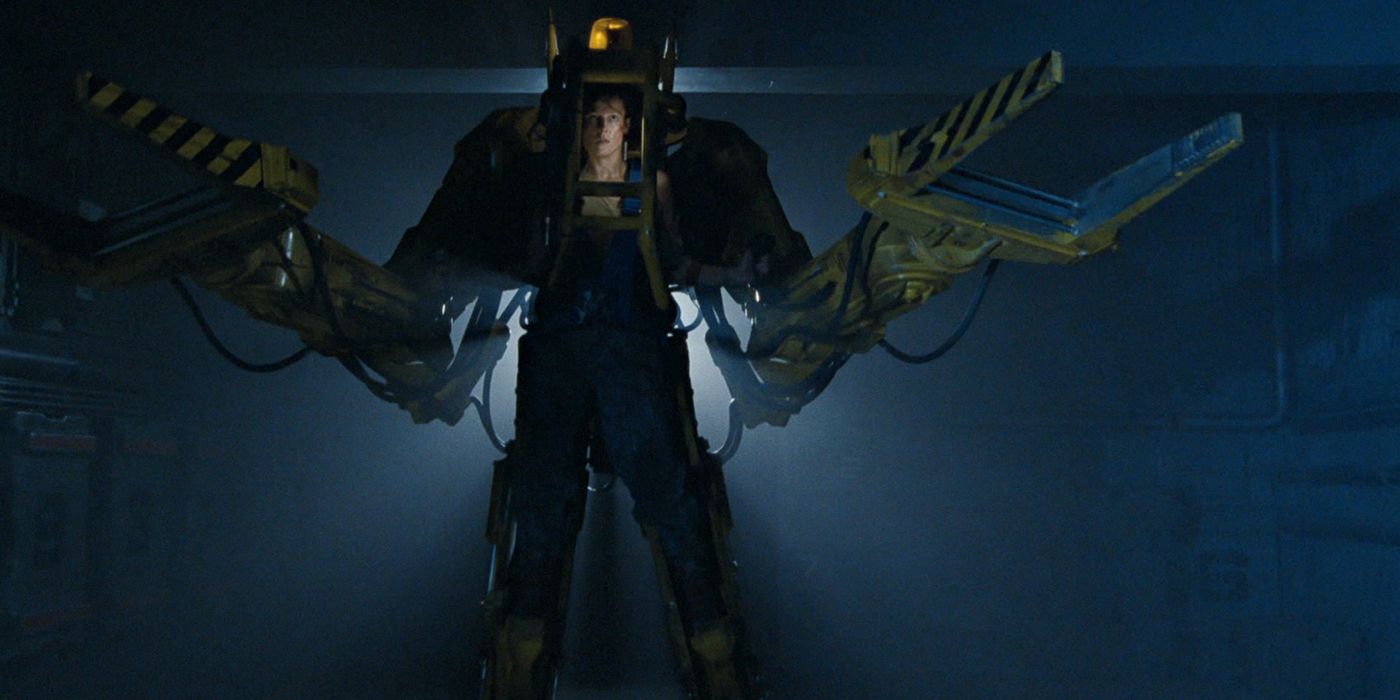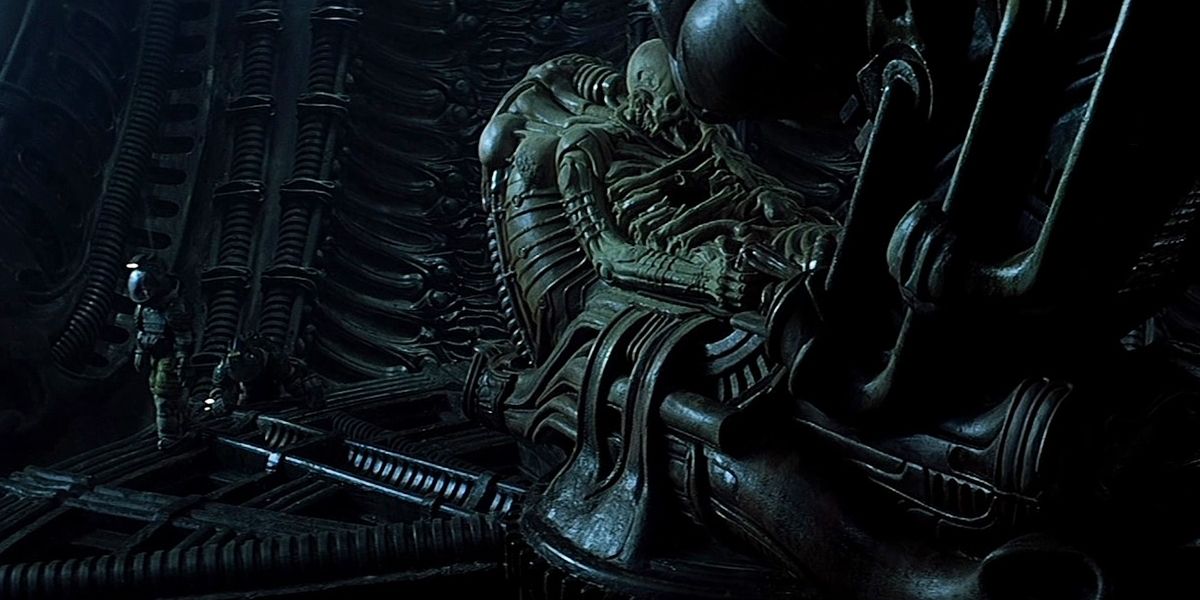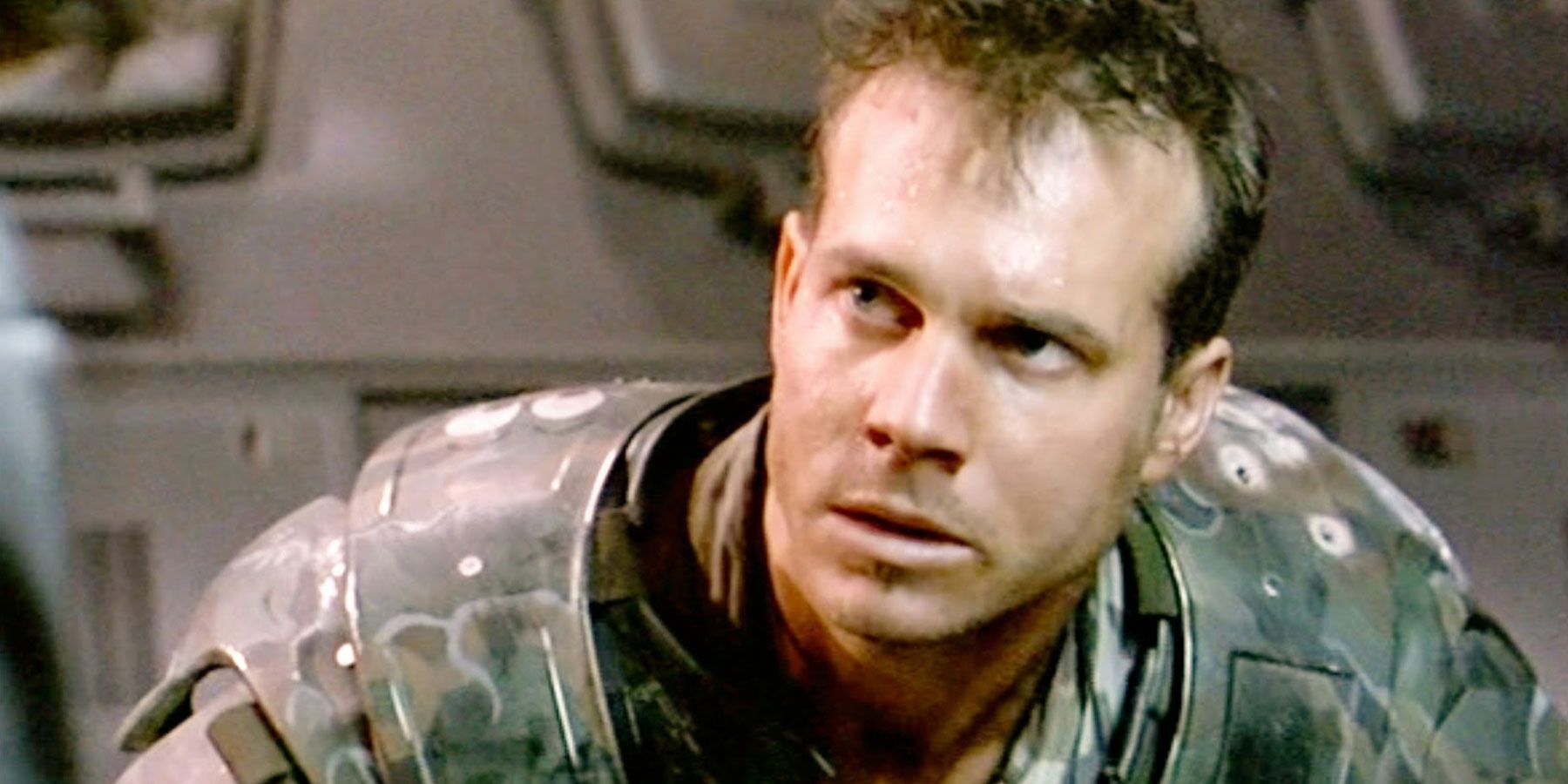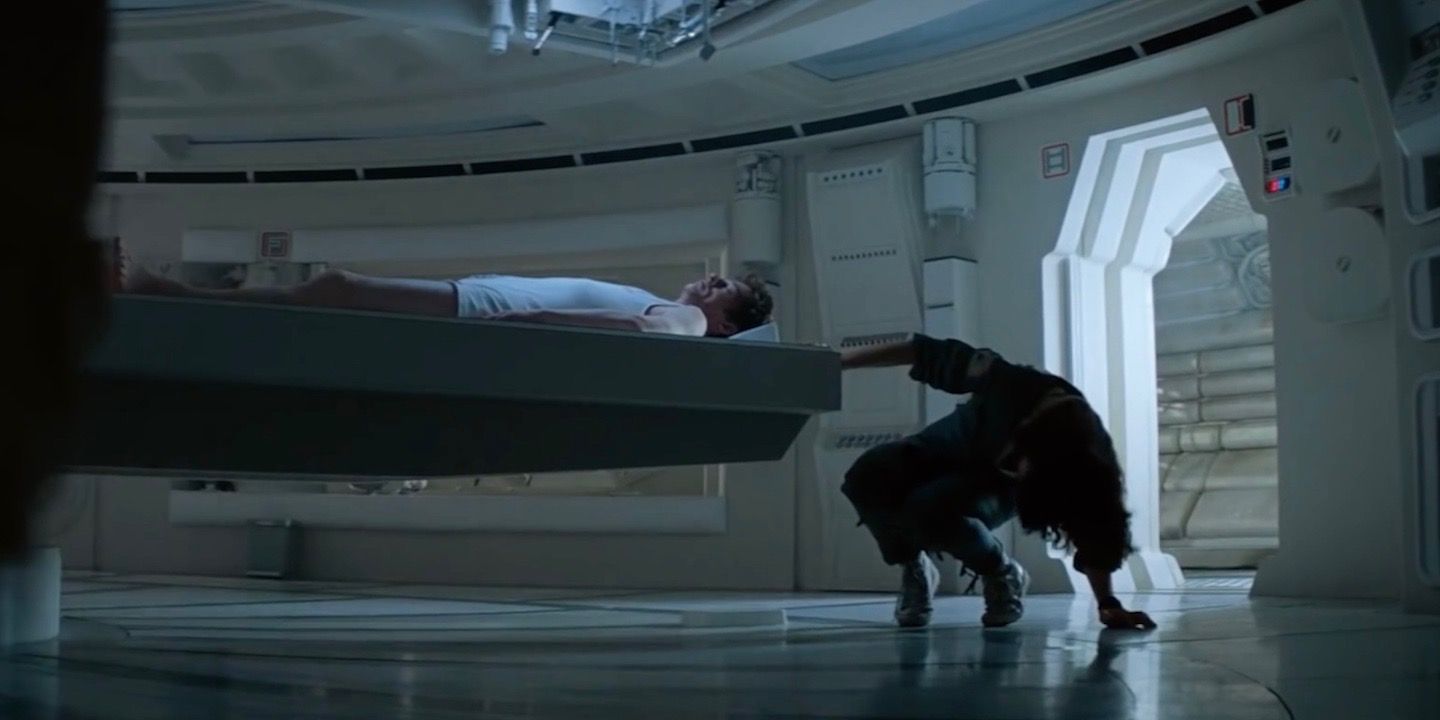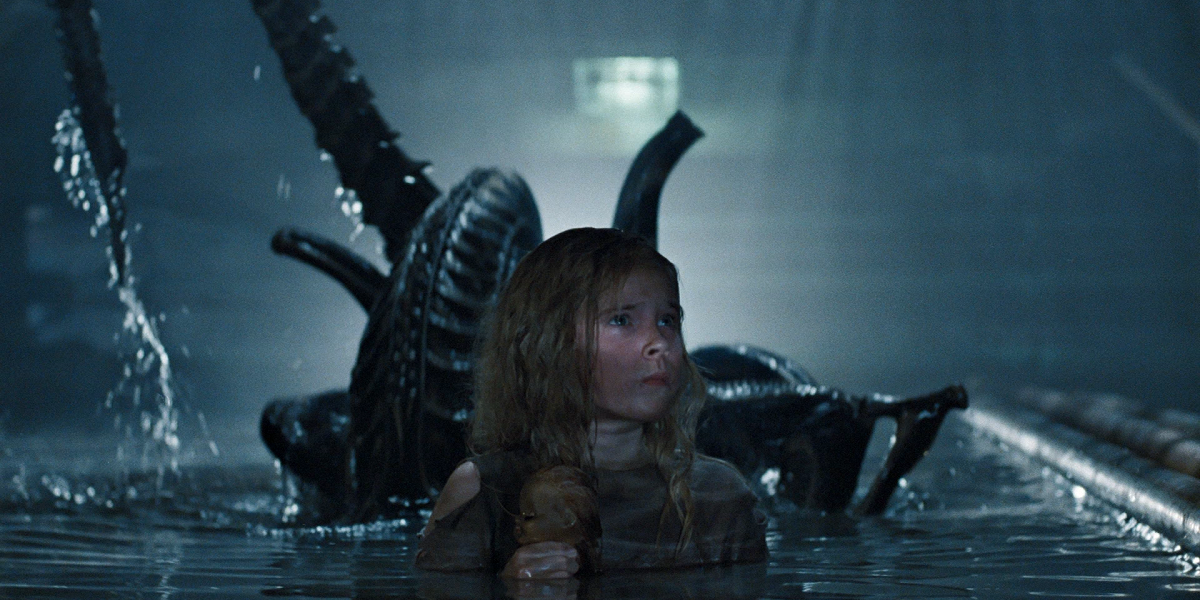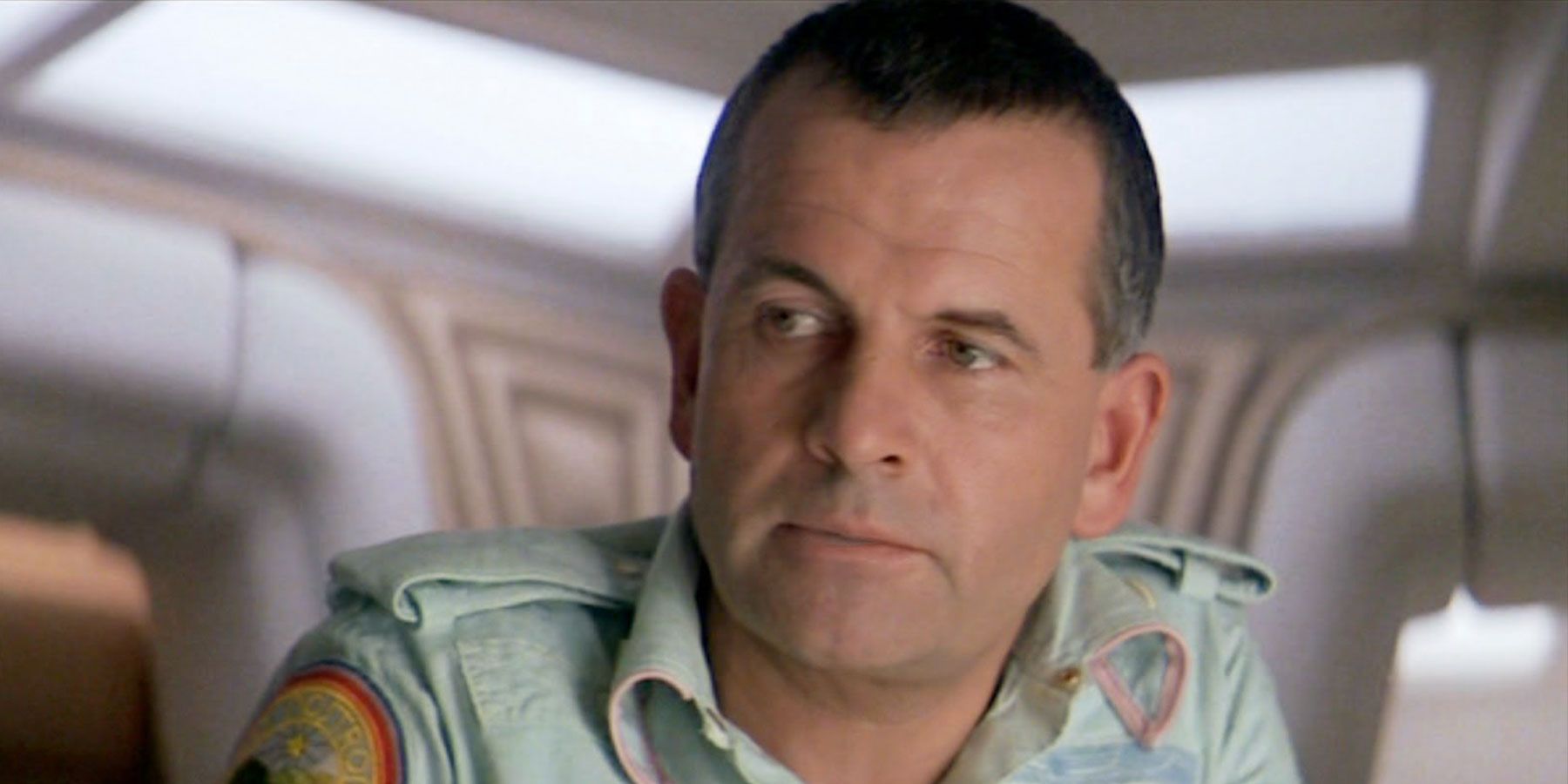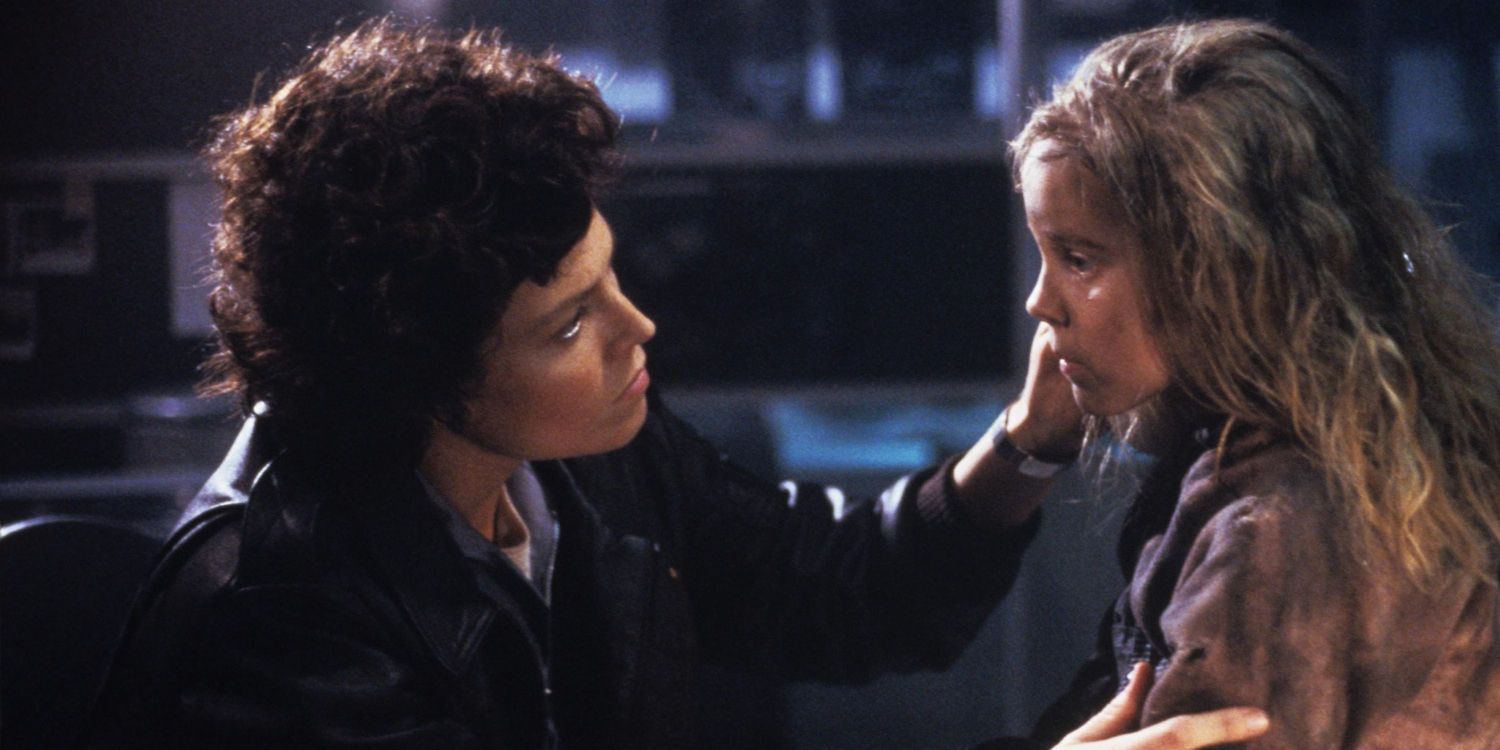It’s an age-old question: which movie is better, Alien or Aliens? It’s not often that fans debate whether a sequel is better than the original, but it’s not usually this close a call. In the Alien fan base, this debate is considered to be comparing apples and oranges. Alien is more of a horror movie, and Aliens is more of an action movie. They’re both as good as they can be in those genres.
Still, there are certain basic filmmaking elements that each movie does better than the other. Here are 5 Things Alien Did Better Than Aliens (And 5 Things Aliens Did Better).
Alien: Suspense
A lot of horror movies these days are criticized for their overuse of jump scares, but the problem isn’t that jump scares are bad – it’s simply that a good horror film will build up suspense towards a jump scare to make it more effective. Unearned jump scares aren’t scary, but when they’re earned, they definitely are. Alien is a perfect example of this in practice. When the baby alien scuttles off, that’s what the crew goes looking for – a baby – and that’s what the audience is expecting. So, when a full-grown xenomorph suddenly shows itself, we get a jump scare that works, thanks to suspense and subverting the audience’s expectations.
Aliens: Dialogue
Good dialogue is the cornerstone of keeping a movie-going audience hooked. The dialogue in Alien isn’t bad, but it feels impersonal. A lot of the lines could’ve been swapped around the characters and it wouldn’t have affected the viewer’s understanding of the plot too much. James Cameron’s dialogue in Aliens, however, is a vast improvement.
The characters are all well-rounded and clearly defined – even the one-liners have been tailored to the characters who utter them – and Cameron’s exposition doesn’t feel like exposition; it feels like a conversation that happens to reveal information that’s relevant to the plot. Aliens’ dialogue beats Alien’s dialogue, hands down.
Alien: Pace
Alien’s first big scare is the infamous chest-burster scene, which doesn’t appear until around 45 minutes into the movie. This is because Ridley Scott is a master of pacing. He doesn’t rush into introducing the titular creature. He lets us get to know the characters and builds up the tense atmosphere of the space station. When John Hurt is attacked by a facehugger, there are no immediate consequences, so the crew all have a party to celebrate his good health. And that’s when a baby alien forces its way through his chest. The first Alien film is a masterclass in pacing.
Aliens: Final Battle
In the final battle sequences of both Alien and Aliens, it boils down to Ripley fighting a xenomorph, and both times, she’s hopelessly outmatched. However, there are a couple of points that make James Cameron’s version of this fight more thrilling than Ridley Scott’s. For starters, Ripley has more to fight for the second time around. She’s not just fighting for her own survival; she’s fighting for Newt’s, too. And by hopping into one of the exoskeleton suits that was introduced earlier (this is a prime example of the screenwriting principle of “plant and payoff”), she can actually fight the xenomorph herself.
Alien: Composition
Both Alien and Aliens look fantastic, but the work that Ridley Scott and his cinematographer Derek Vanlint did on the first Alien movie is unparalleled. The scenes on the space station look like Kubrick could’ve shot them, while some of the scenes on the planet where they find the xenomorph eggs with the dead Space Jockey could easily stand on their own as terrifying futuristic works of art. James Cameron and his cinematographer Adrian Biddle included some great shots in Aliens, but it’s not the dazzling visual experience that Alien is. When you’re watching Alien, it’s so engaging that you feel hot when it’s hot, and cold when it’s cold.
Aliens: Subtext
James Cameron made Aliens as a pretty clear allusion to the Vietnam War. An American corporation sends soldiers to a foreign world to fight a war that isn’t theirs, and the bureaucrats respond to every potentially dangerous situation by immediately opening fire. The movie can be watched and enjoyed without reading into this subtext, but the political overtones give a deeper meaning to all the intergalactic action. And it’s not even the overarching theme of the film – the film is really about motherhood, and the maternal instinct (both in the hero and in the villain). Cameron is a master of subtext.
Alien: Realism
Okay, obviously, Alien isn’t realistic. But realism in science fiction simply means selling to the audience that the fantastical things that are happening to people are really happening. As an example, Tony Stark’s original Iron Man suit was absurdly advanced technology, but we felt the weight of it. We heard it clank, we saw that it was difficult to put on and operate. Contrast that with his Infinity War armor, which is made of “nanites” that just swarm his body to put a suit around it within five seconds whenever there’s danger. The technology in Alien, the atmosphere on the space station, the exploration of the alien planet – it all felt real in a way that Aliens, and every sci-fi film that came before it, didn’t.
Aliens: Escalating The Stakes
In Alien, the stakes escalate when the space station that previously didn’t have a bloodthirsty alien on board suddenly has a bloodthirsty alien on board. But in Aliens, the stakes escalate continuously throughout. For starters, there are a lot more bloodthirsty aliens this time. And then the humans’ ride back to base is destroyed.
And it becomes apparent that the corporate suits want to take an egg back to Earth. And the xenomorph queen abducts Newt, motivating Ripley to rid the planet of them once and for all. Aliens kicks off with some stakes and then keeps raising them from start to finish.
Alien: Subtle Acting
There is some terrific acting in Aliens (such as Bill Paxton’s “Game over, man! Game over!” monologue), but the performances in the original Alien film are much more nuanced. Sigourney Weaver doesn’t have any ‘80s-flavored one-liners (although, to be fair, her one-liners in Aliens are pretty cool: “Get away from her, you b***h!”) and instead plays Ellen Ripley as a calm, collected professional who’s just there to do her job until she’s forced to survive. Ian Holm gives a chilling portrait of an android from a future where humans don’t trust androids. John Hurt masterfully lulls us into a false sense of security to make the chest-burster all the more shocking. The acting in Alien is superb.
Aliens: Character Development
The screenplay for Alien was written with no genders specified for the characters. They were interchangeable, and as a result, they hardly progress. The Ripley we meet at the beginning is the same Ripley who jets off into space at the end. However, in Aliens, she has a real character arc. She learns that while she’s been in space, her daughter has lived to old age and died. And then she meets Newt, a young girl who has lost her mother to the xenomorphs, and they bond over being a motherless daughter and a daughterless mother. This gives her a reason to join the fight against the xenomorphs, and develop as a character.

